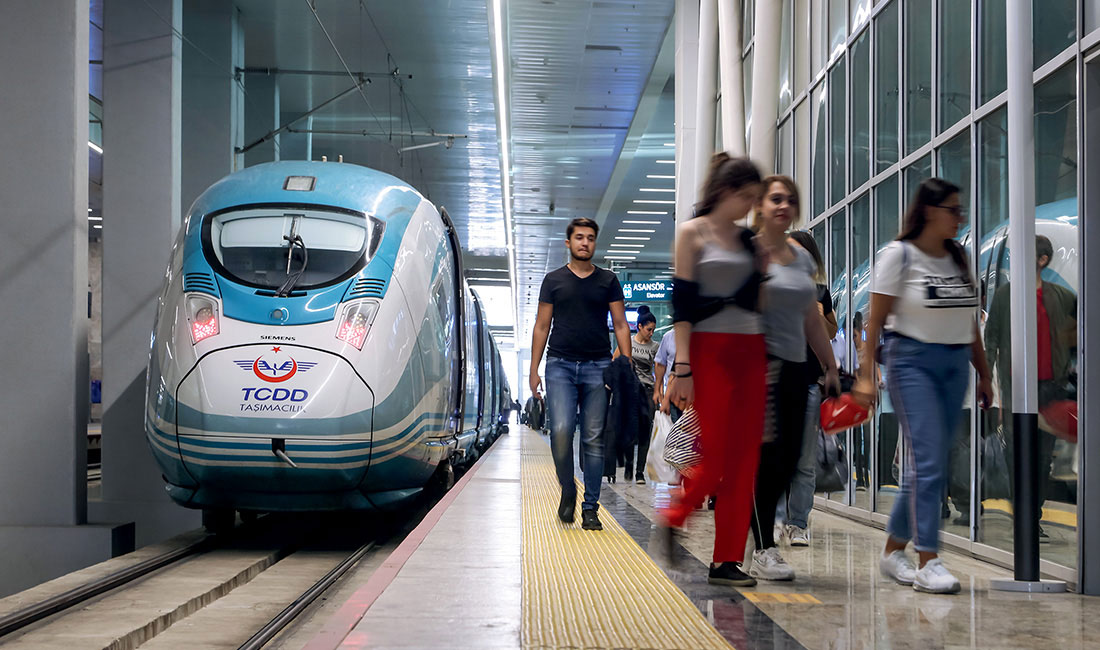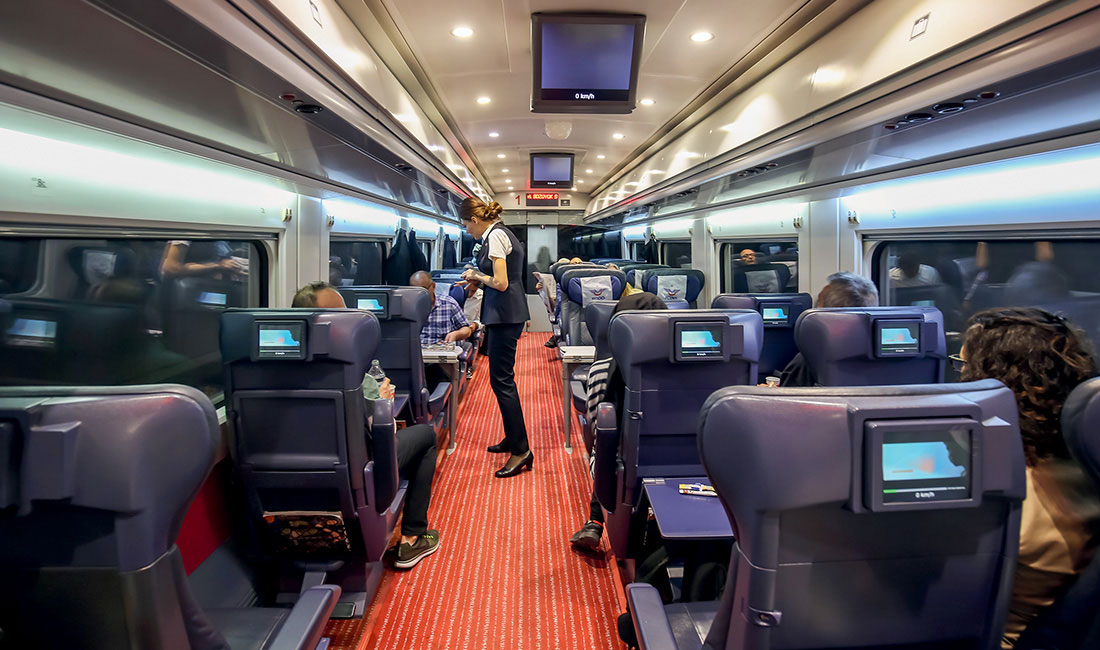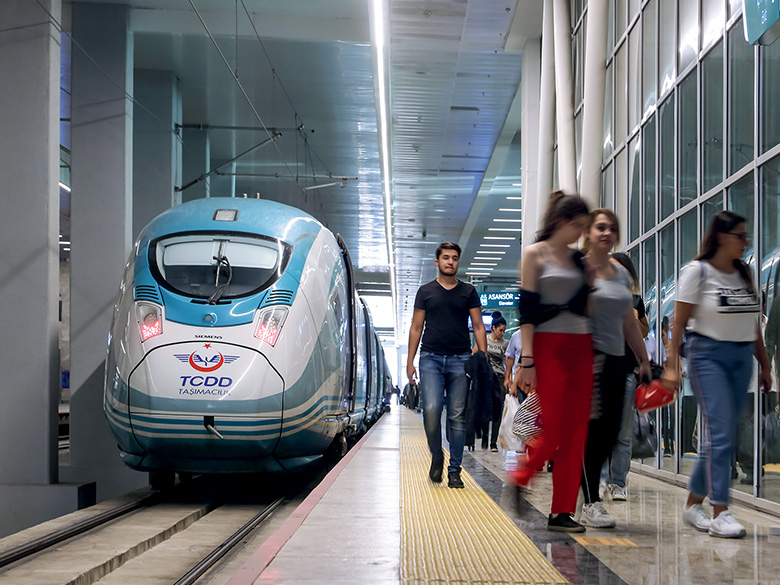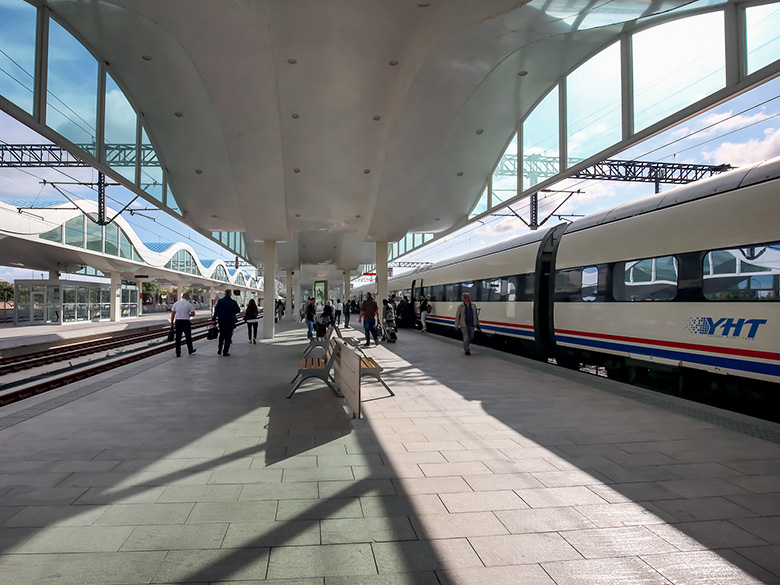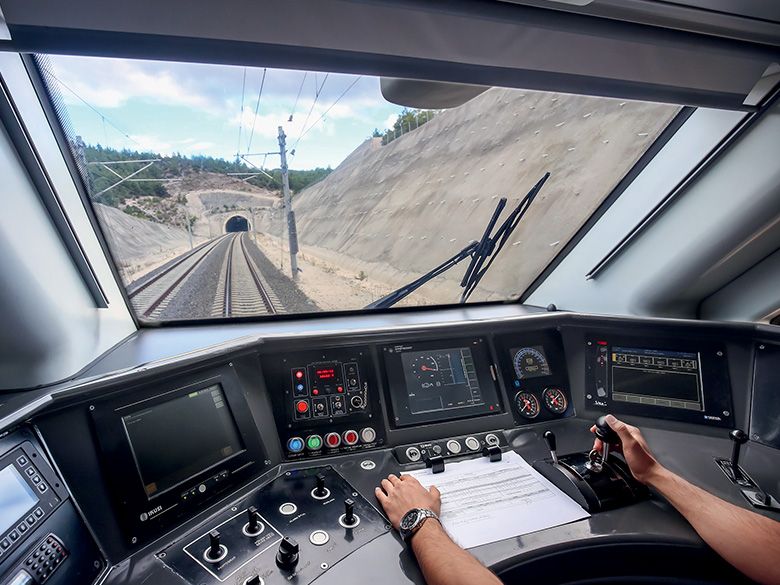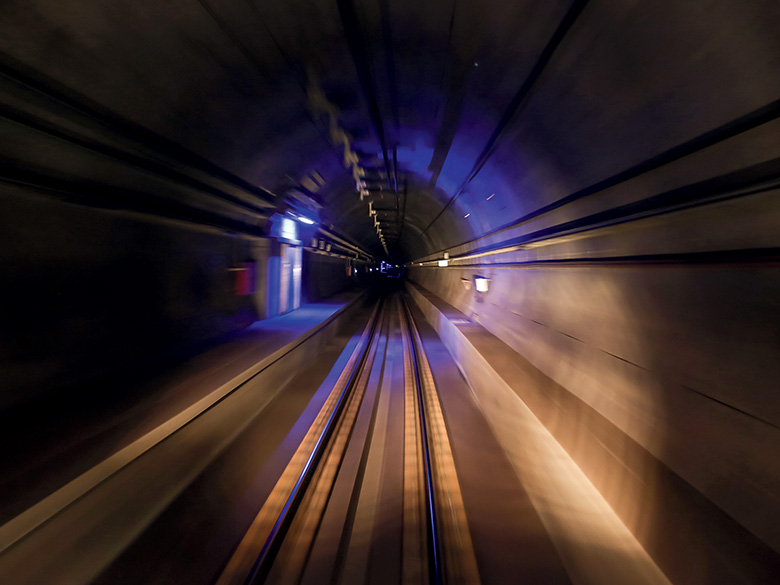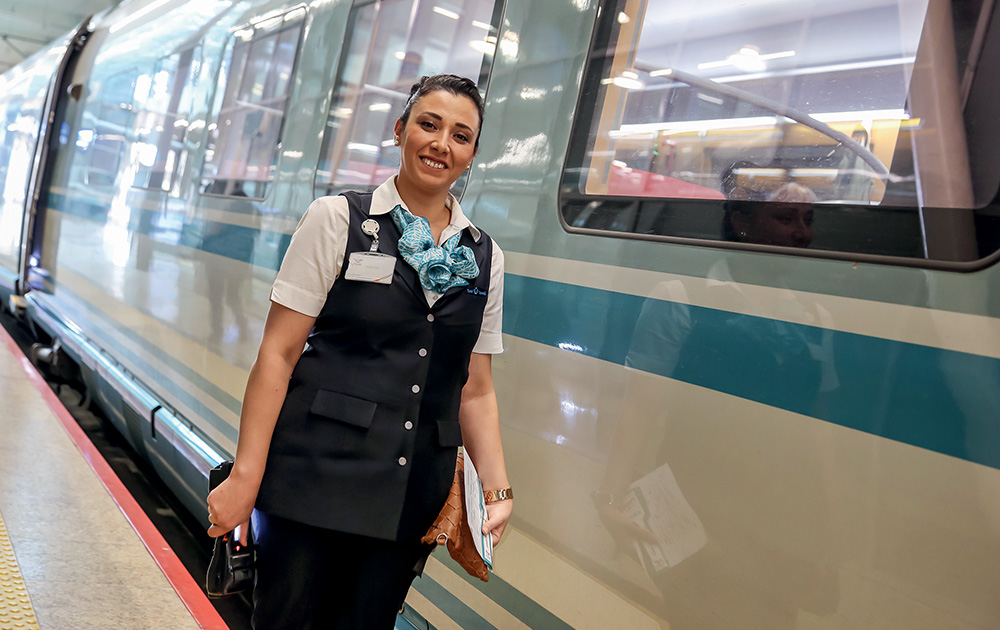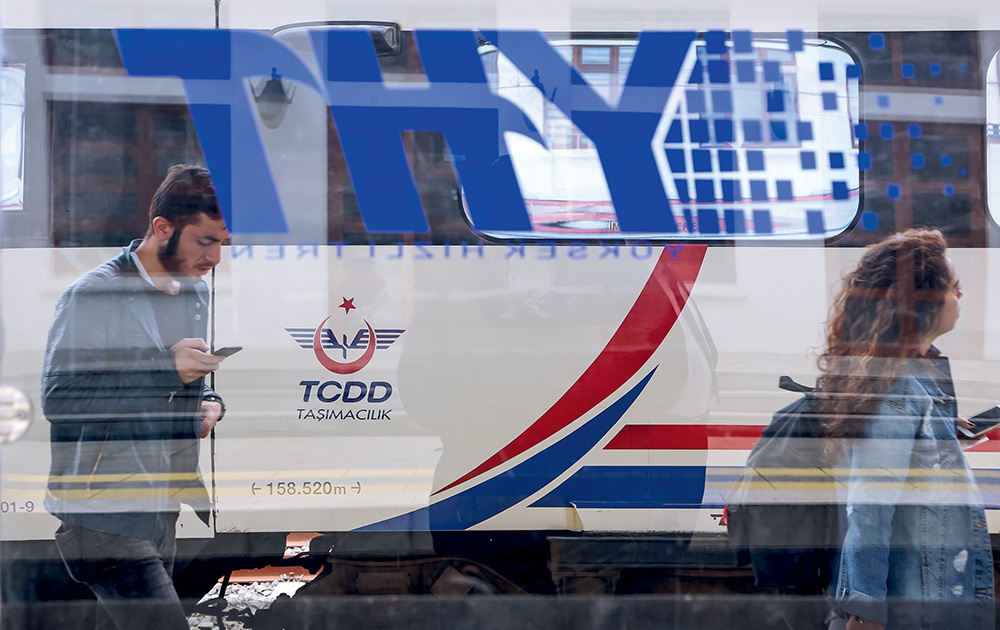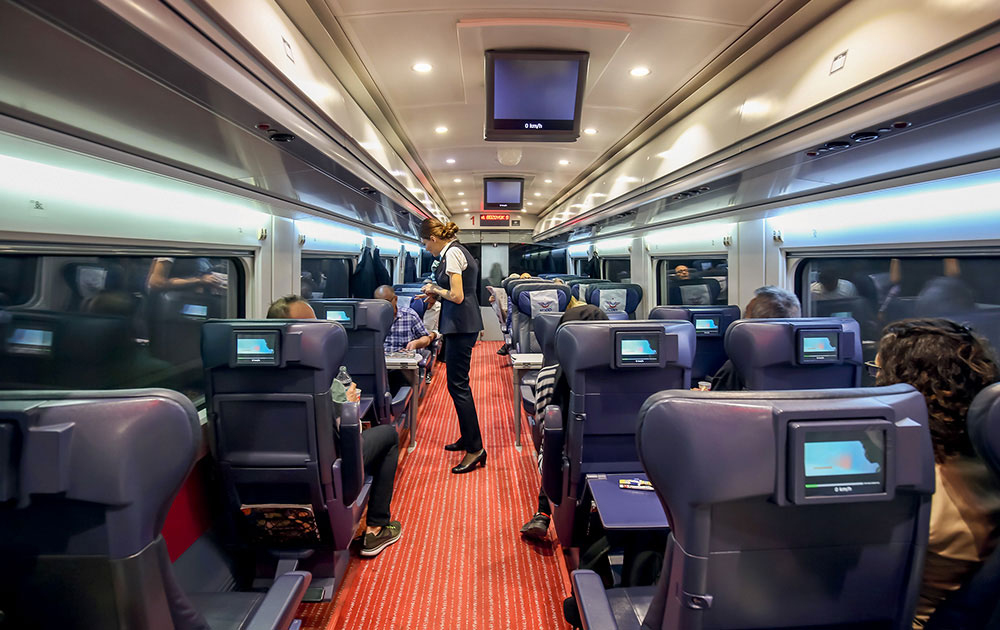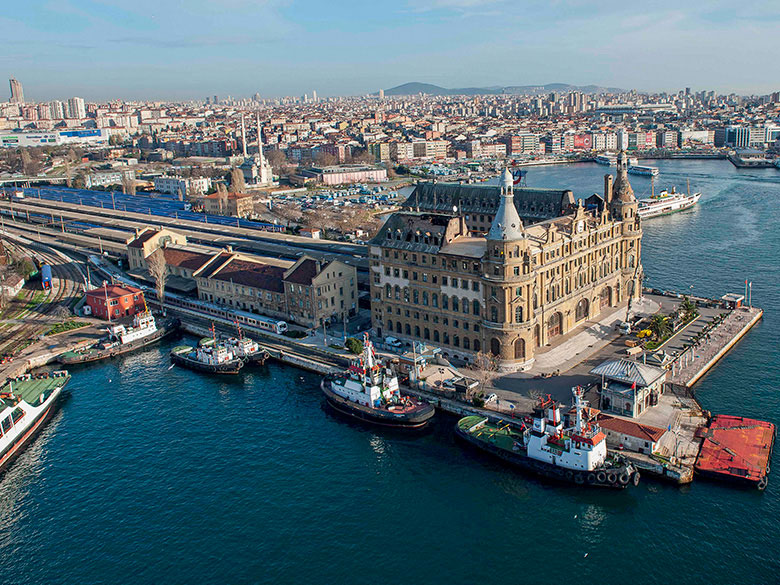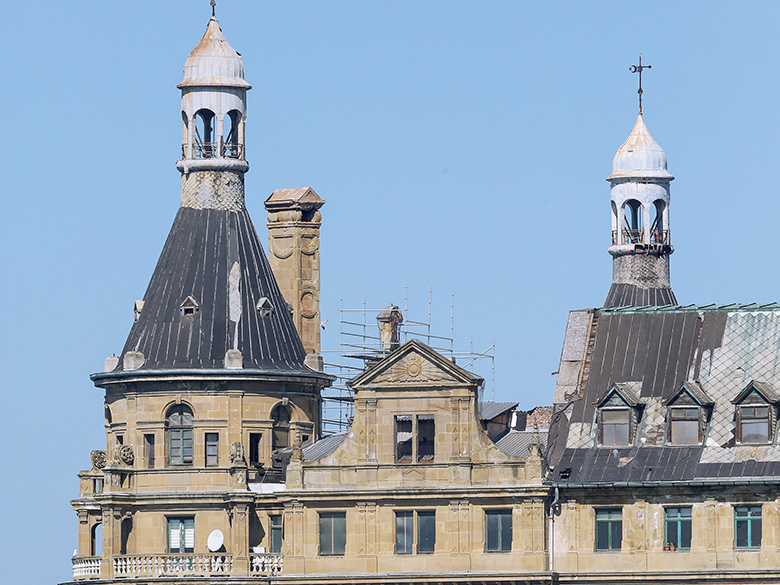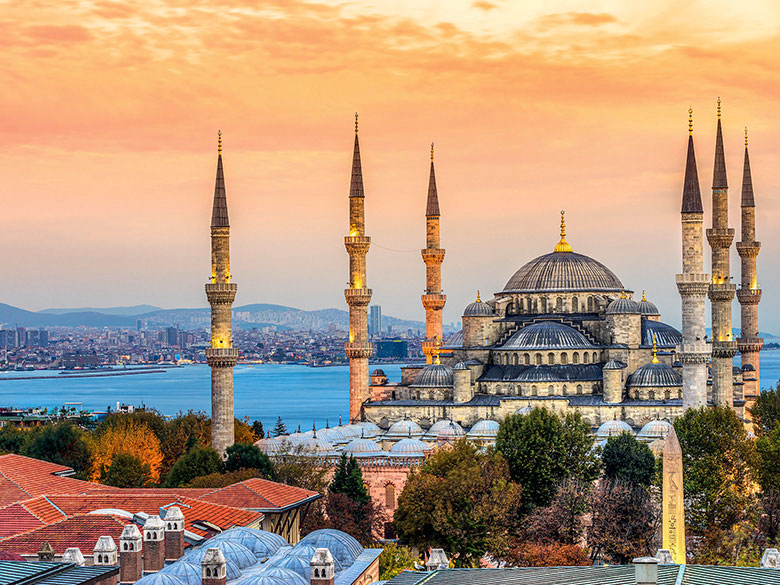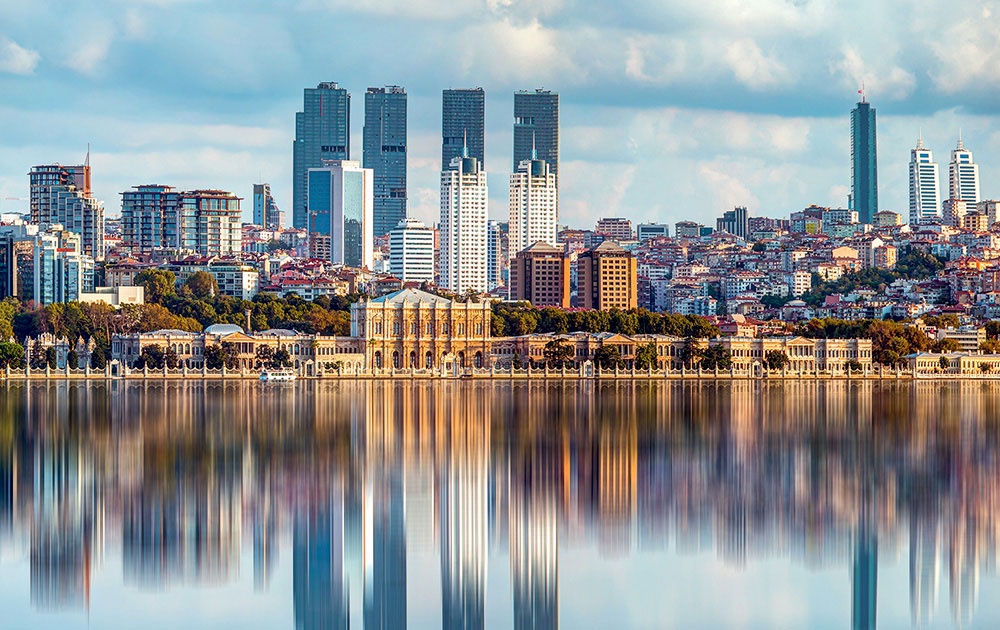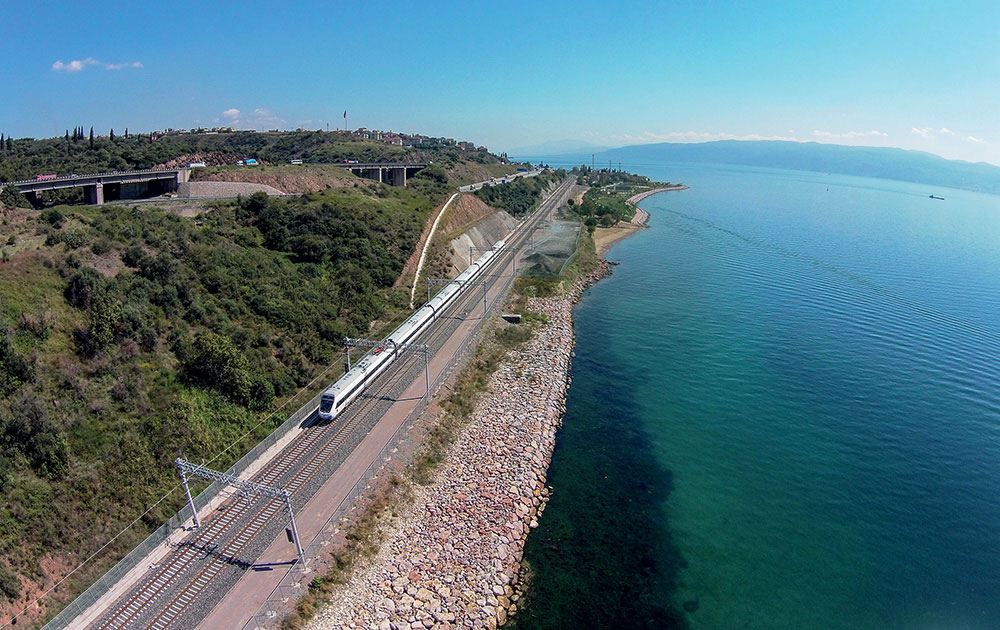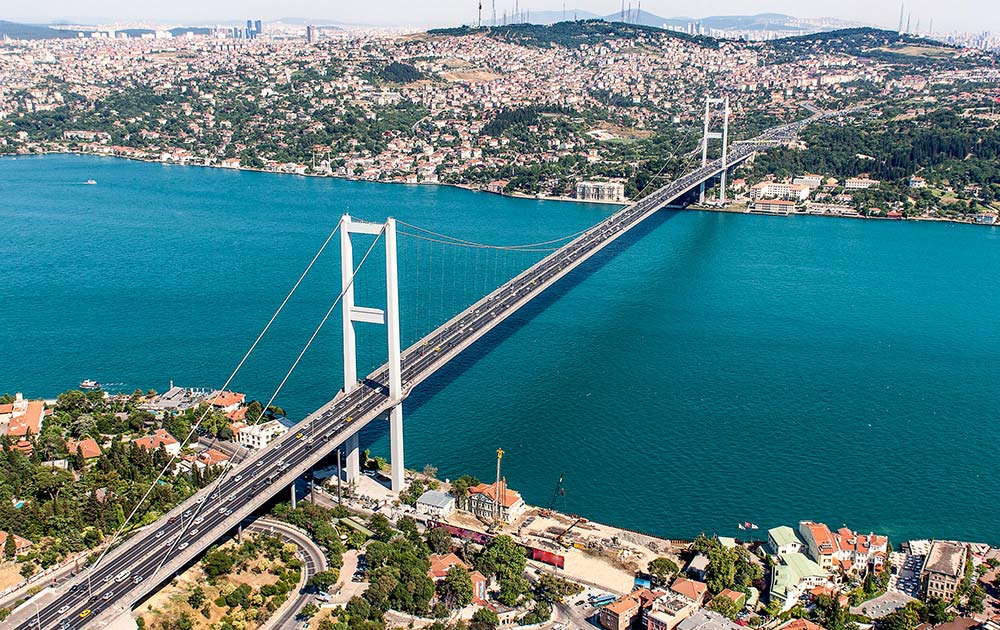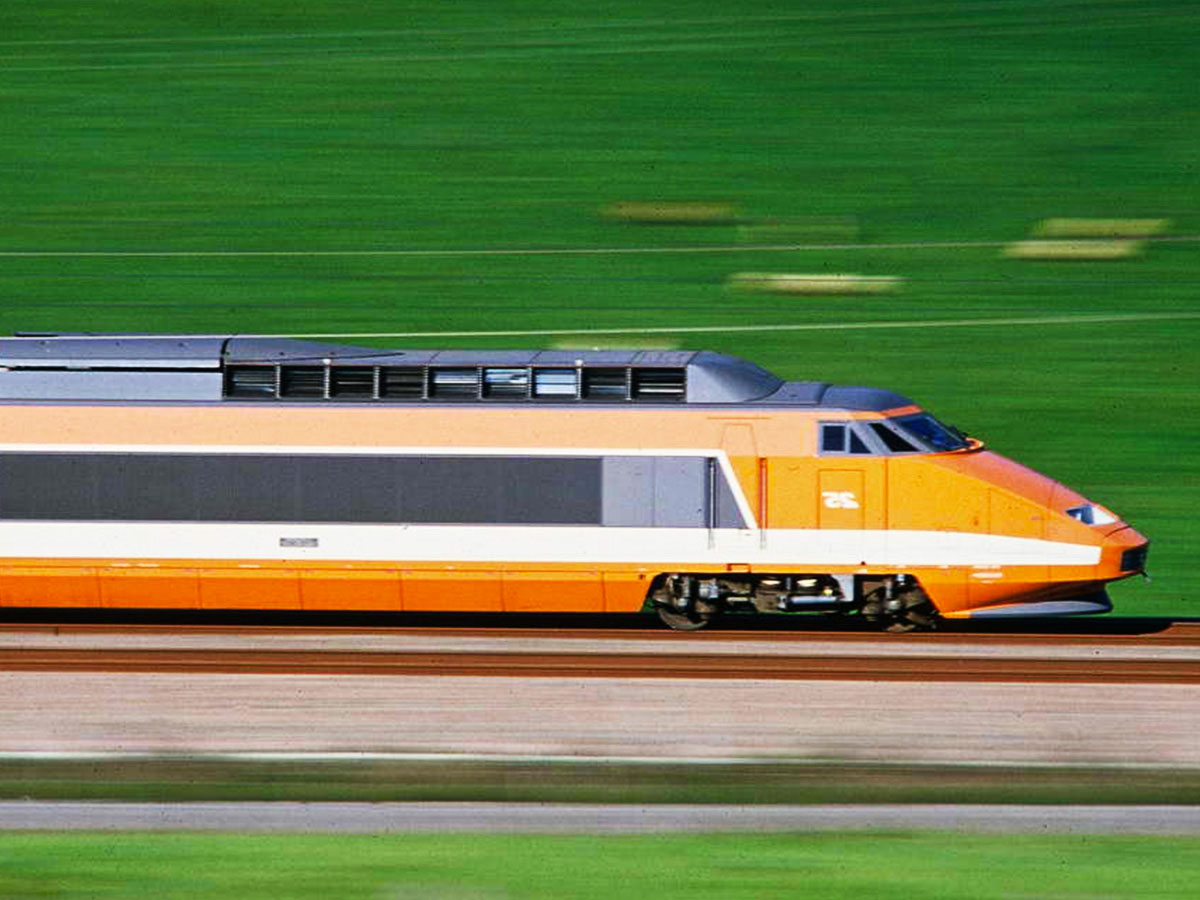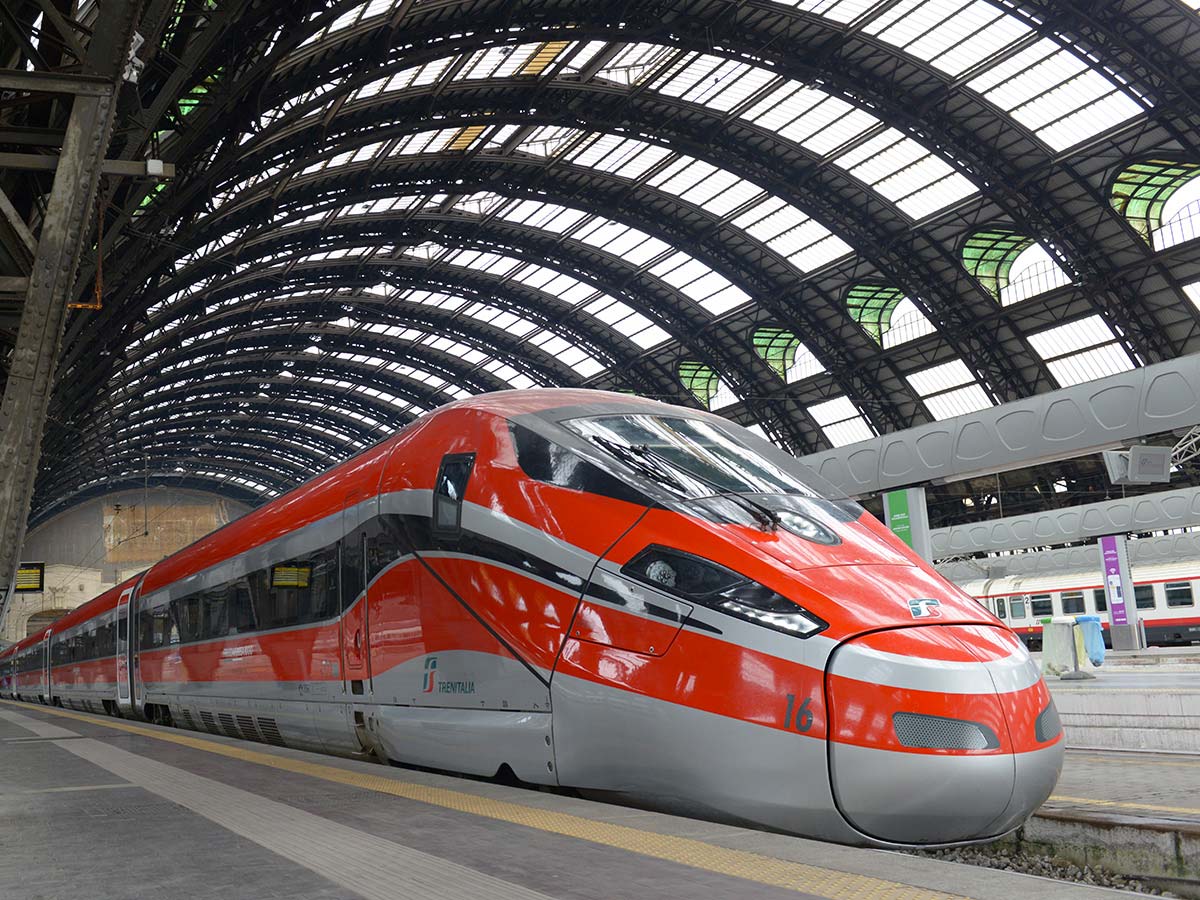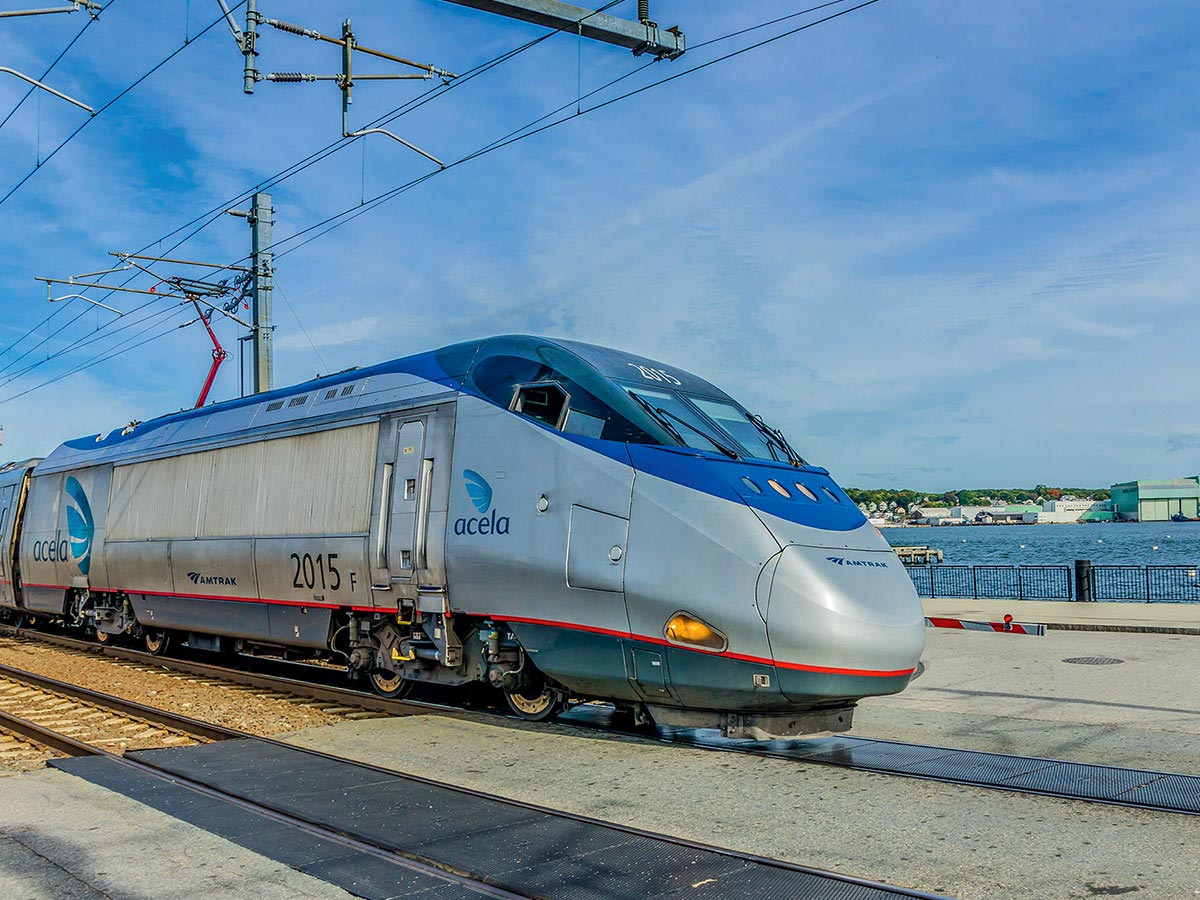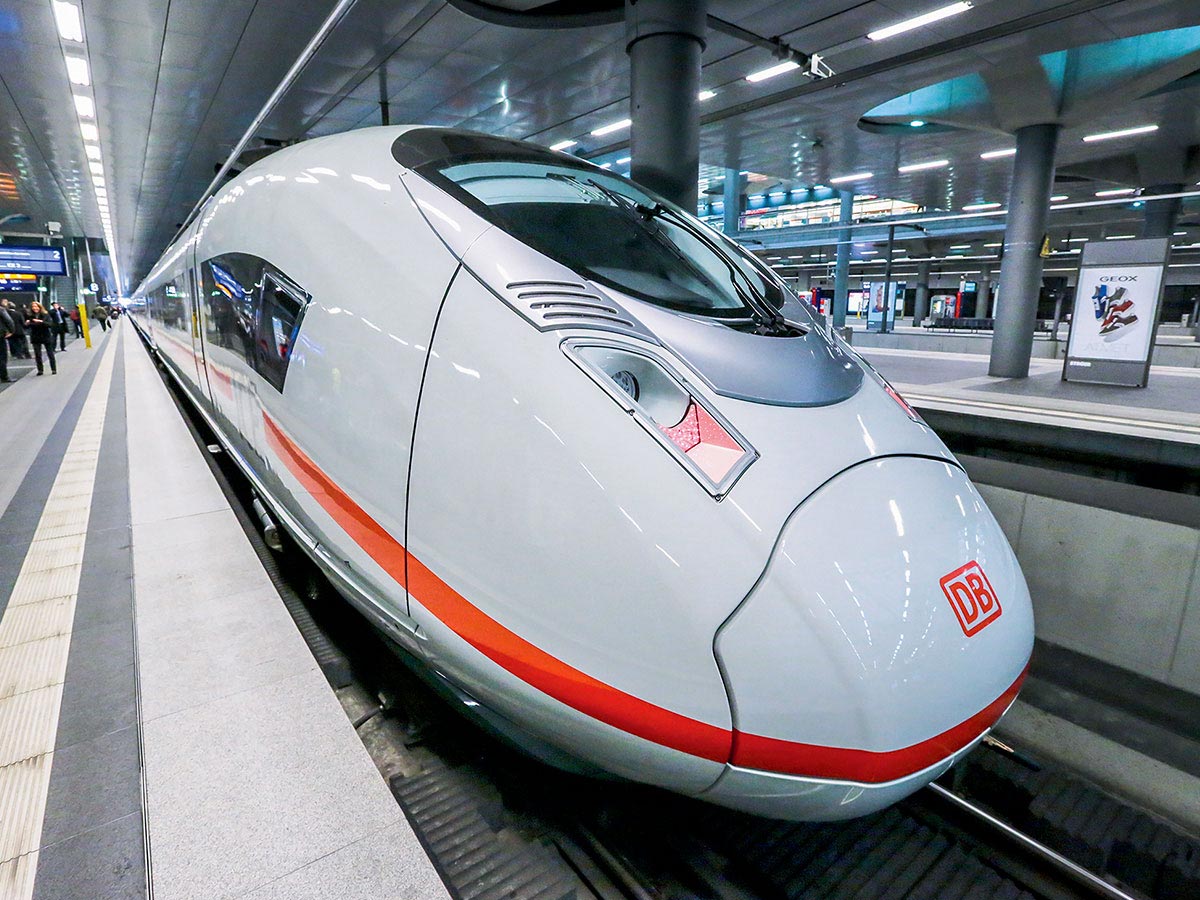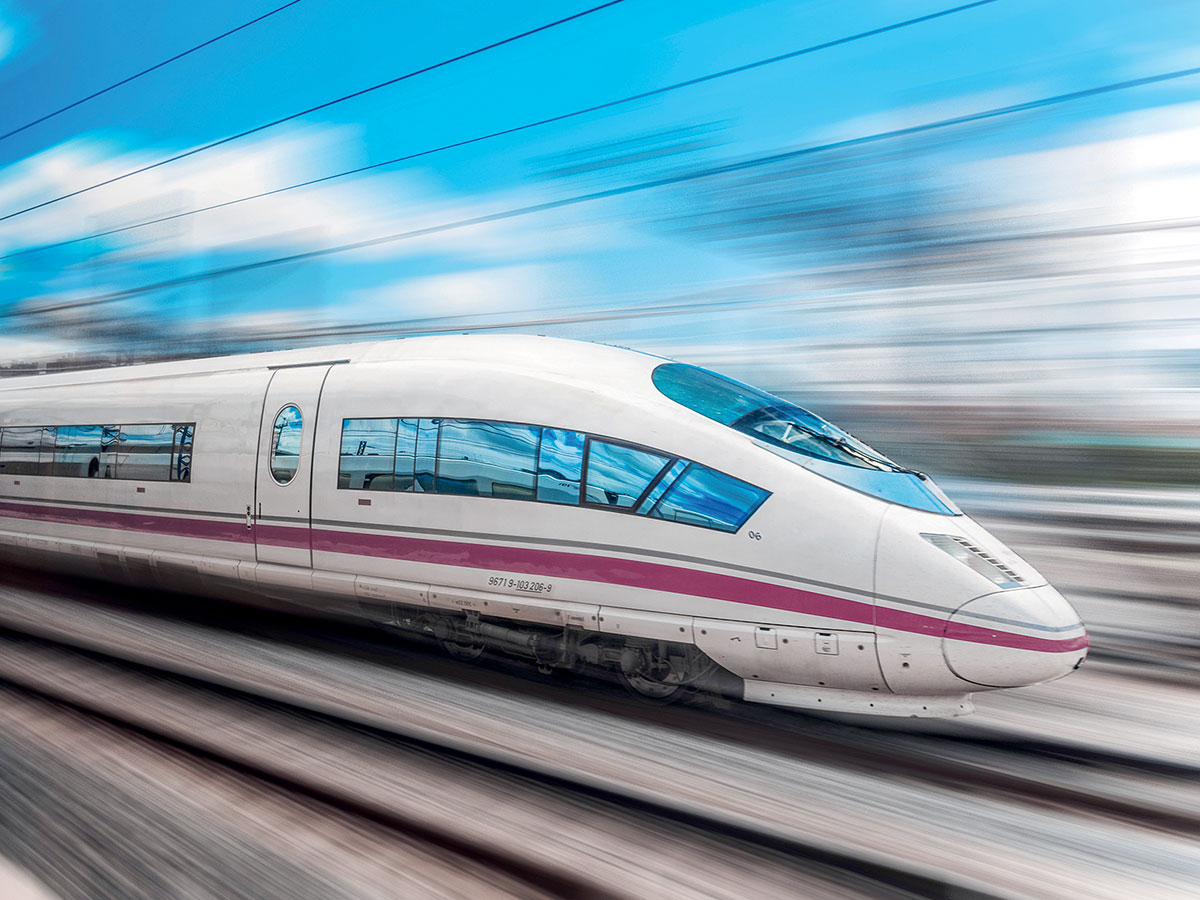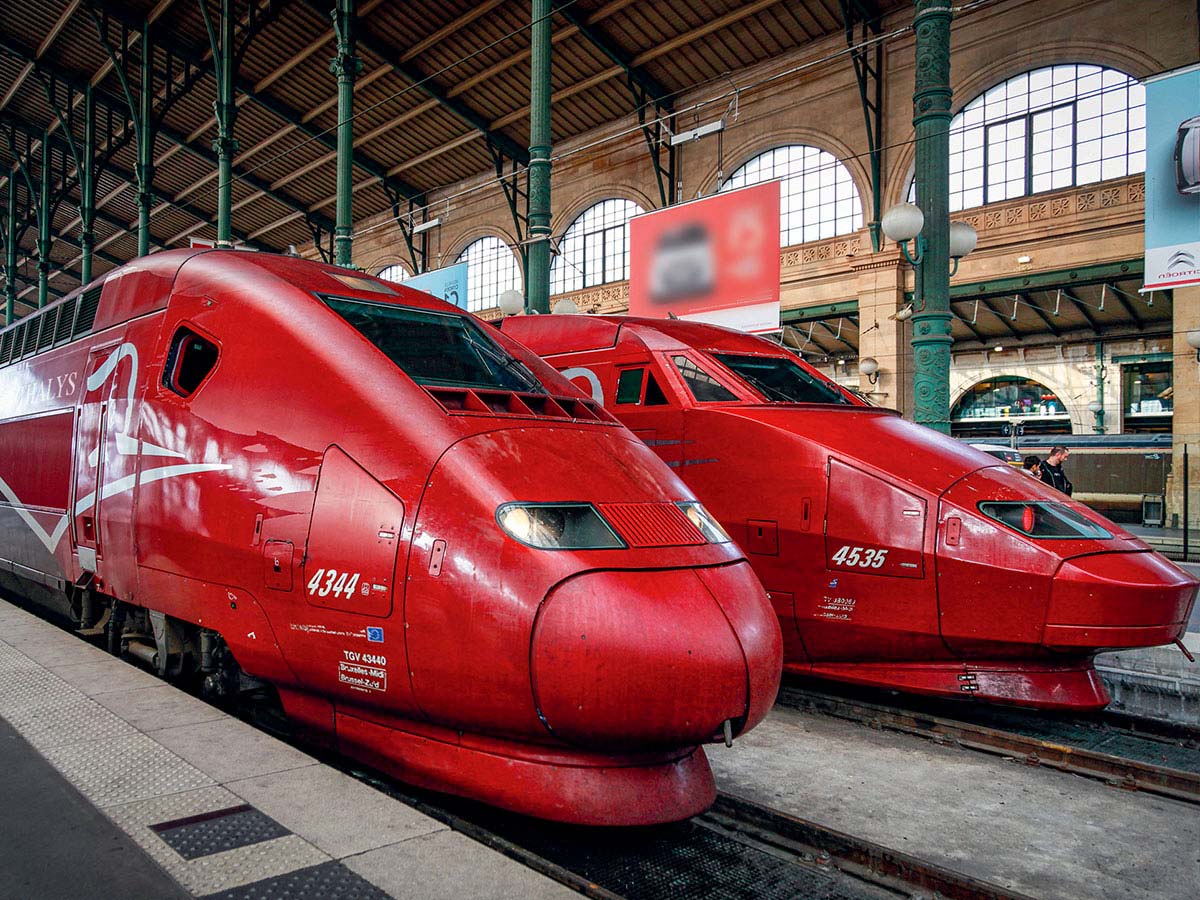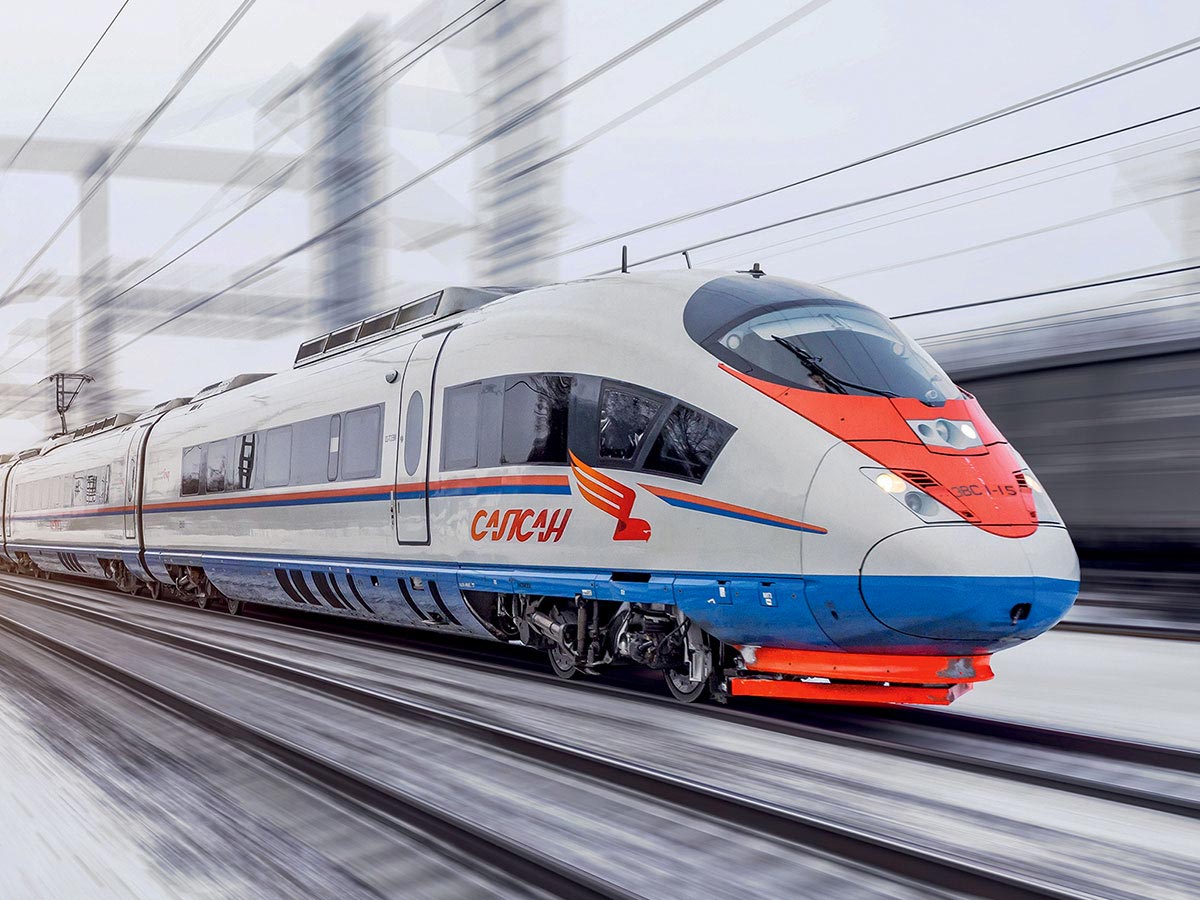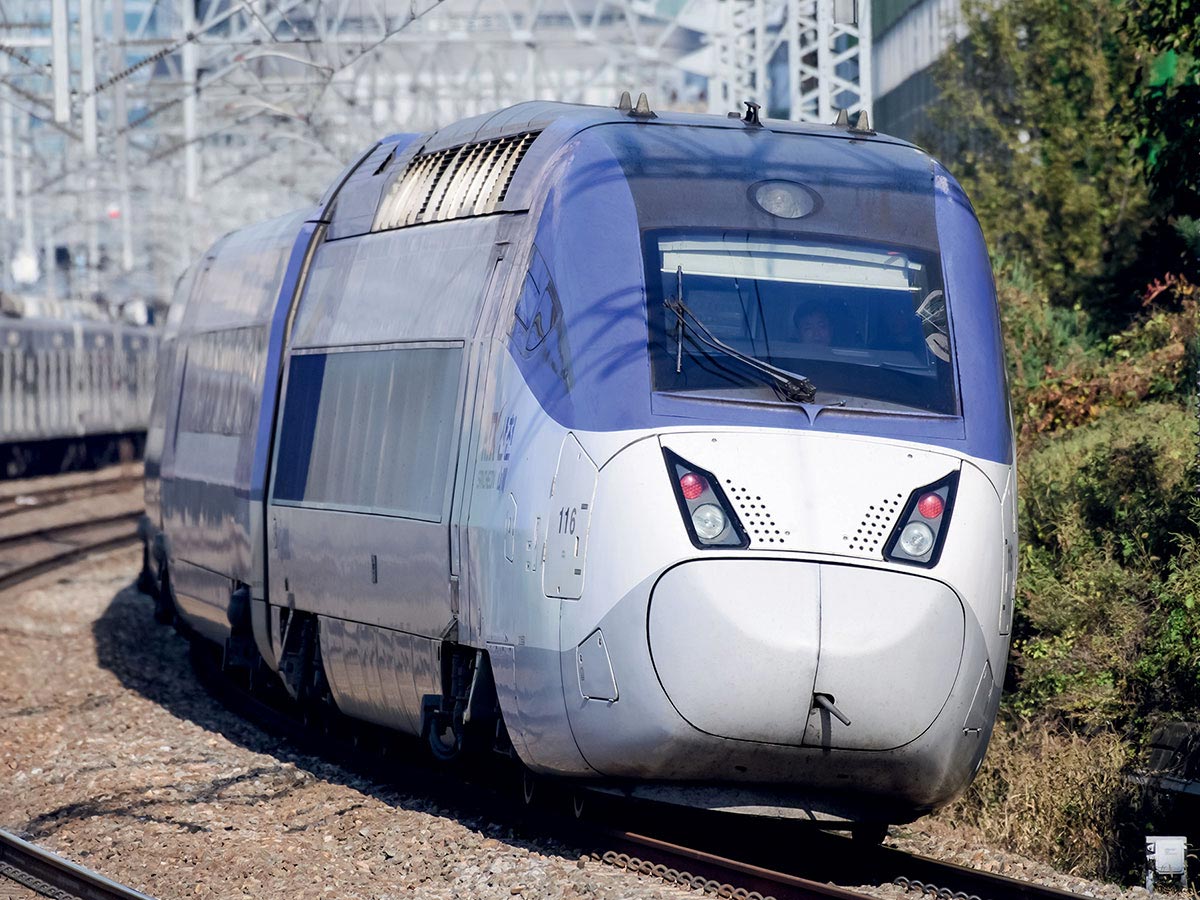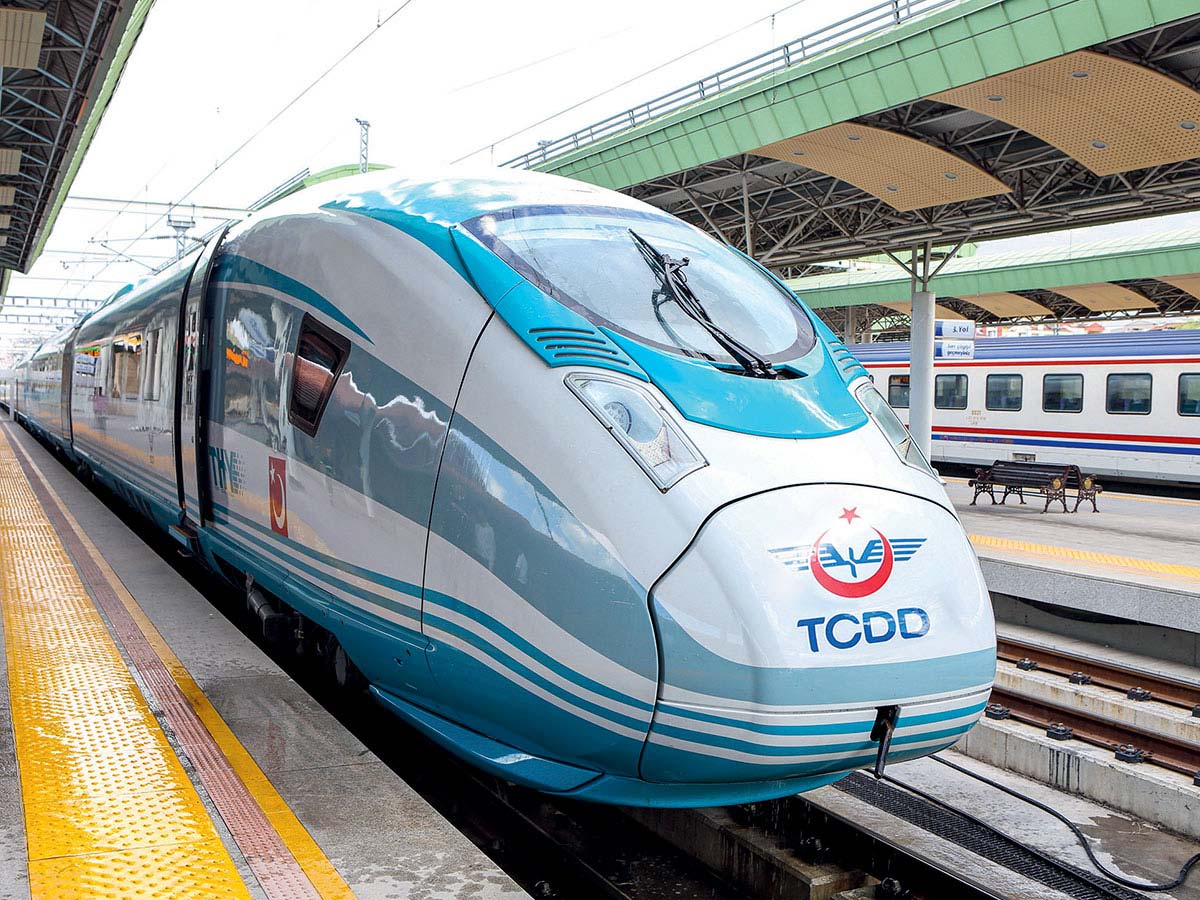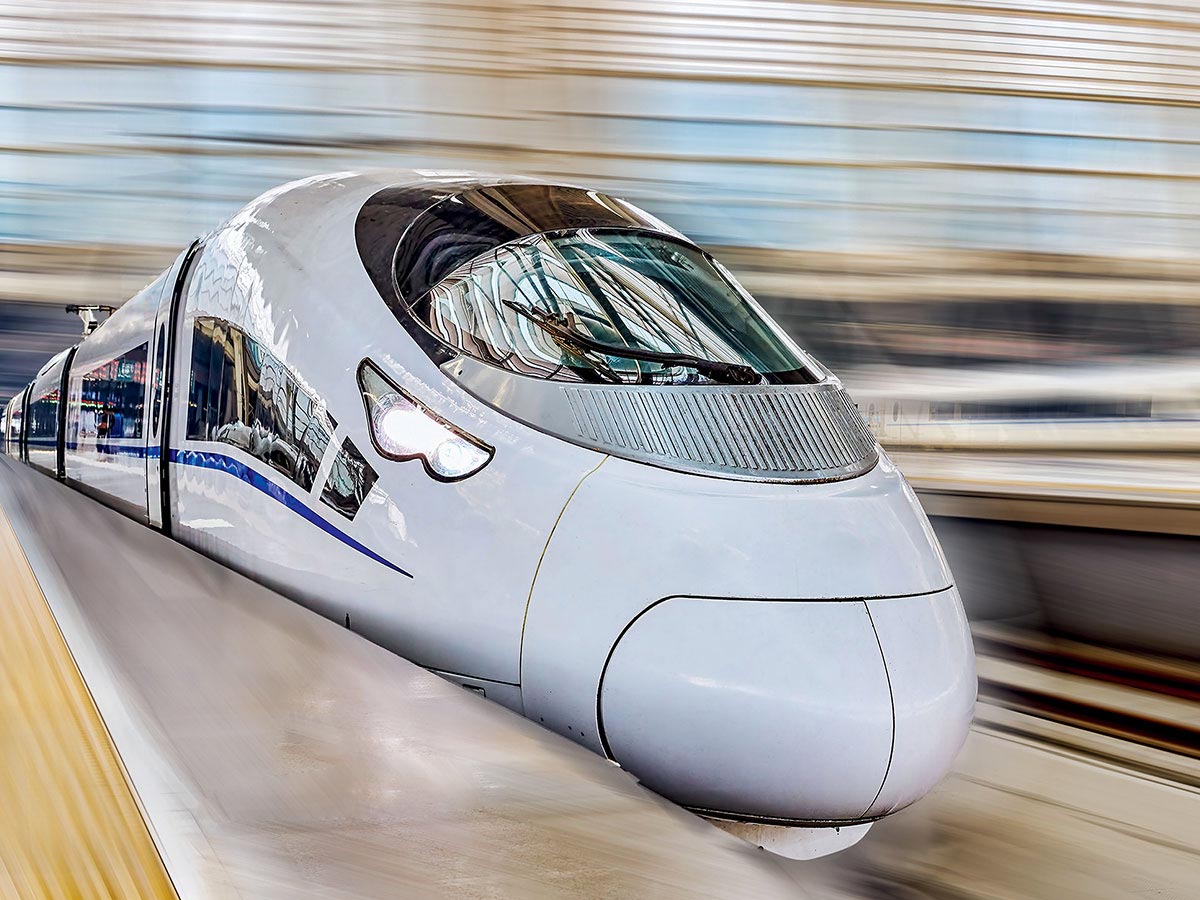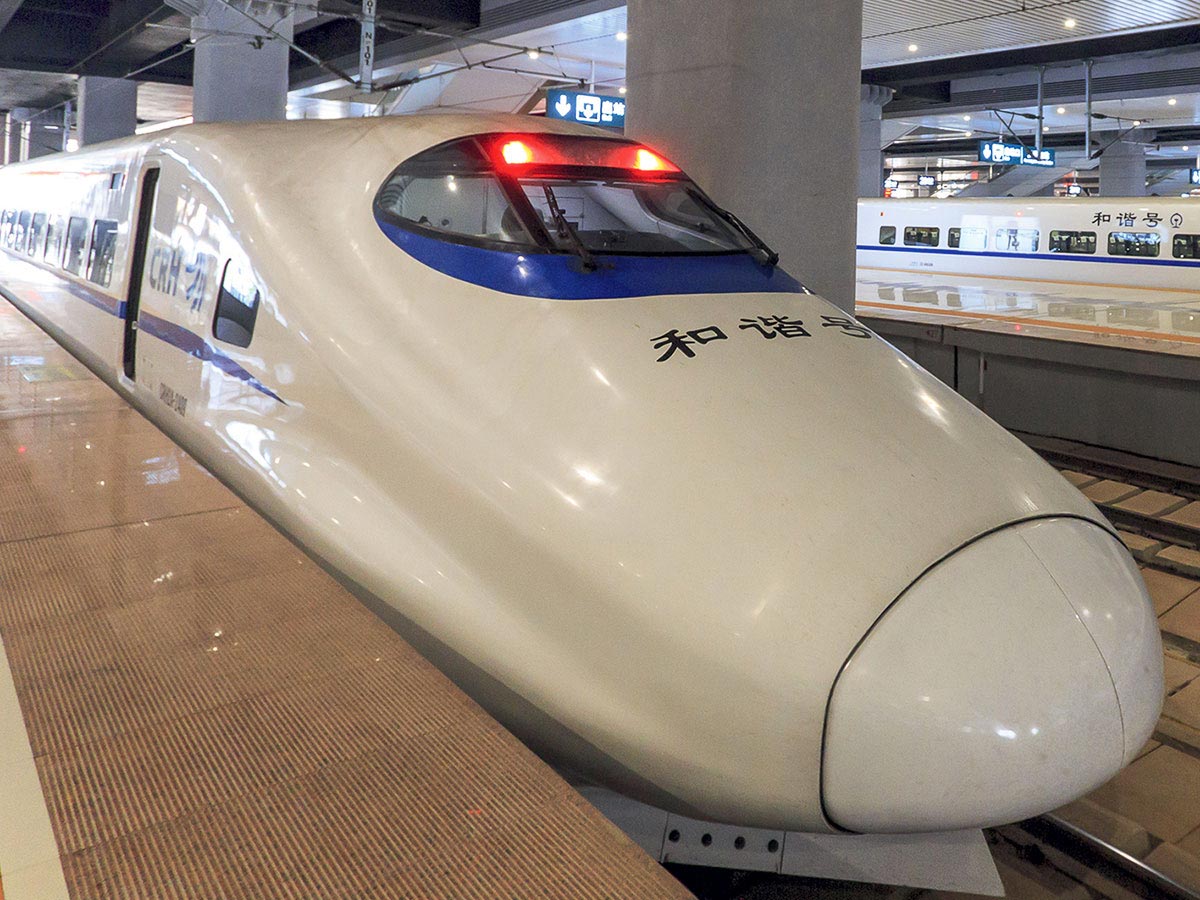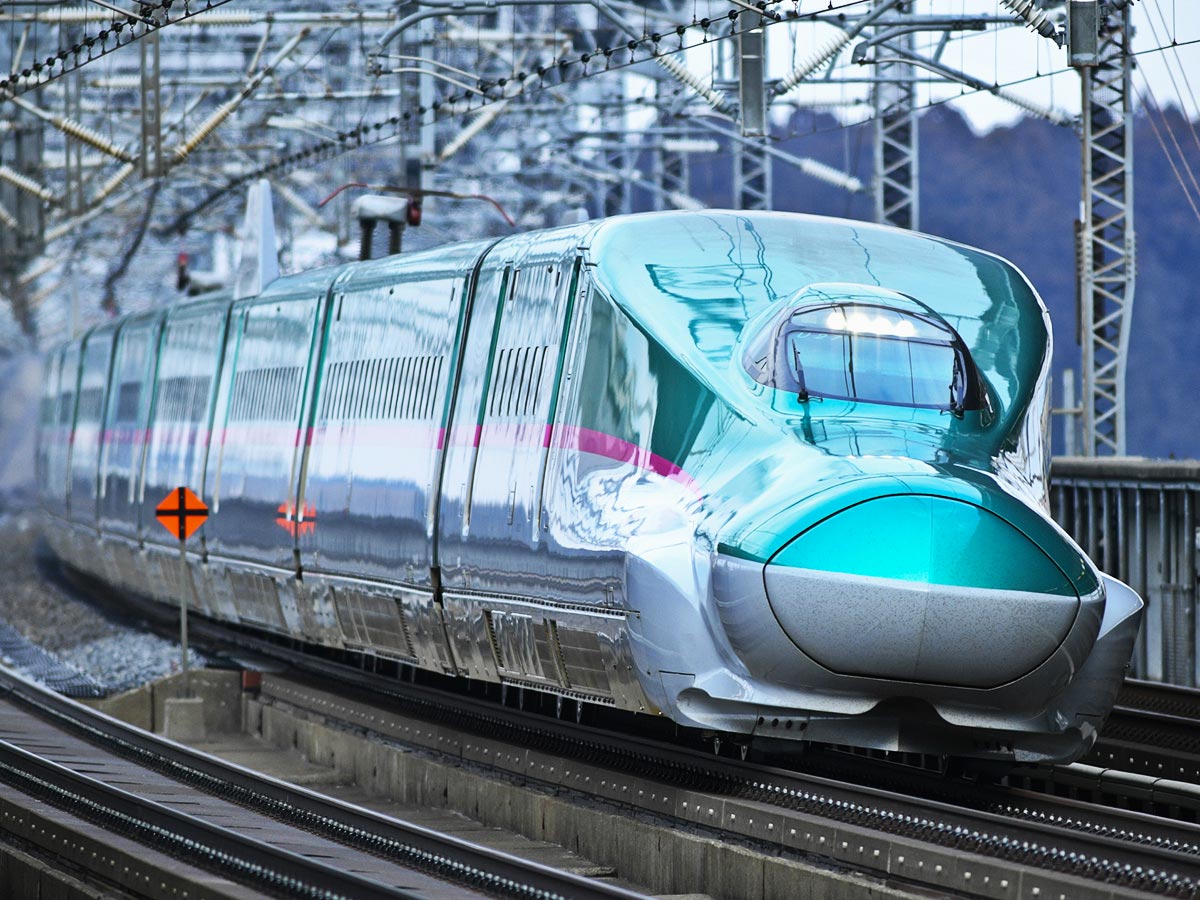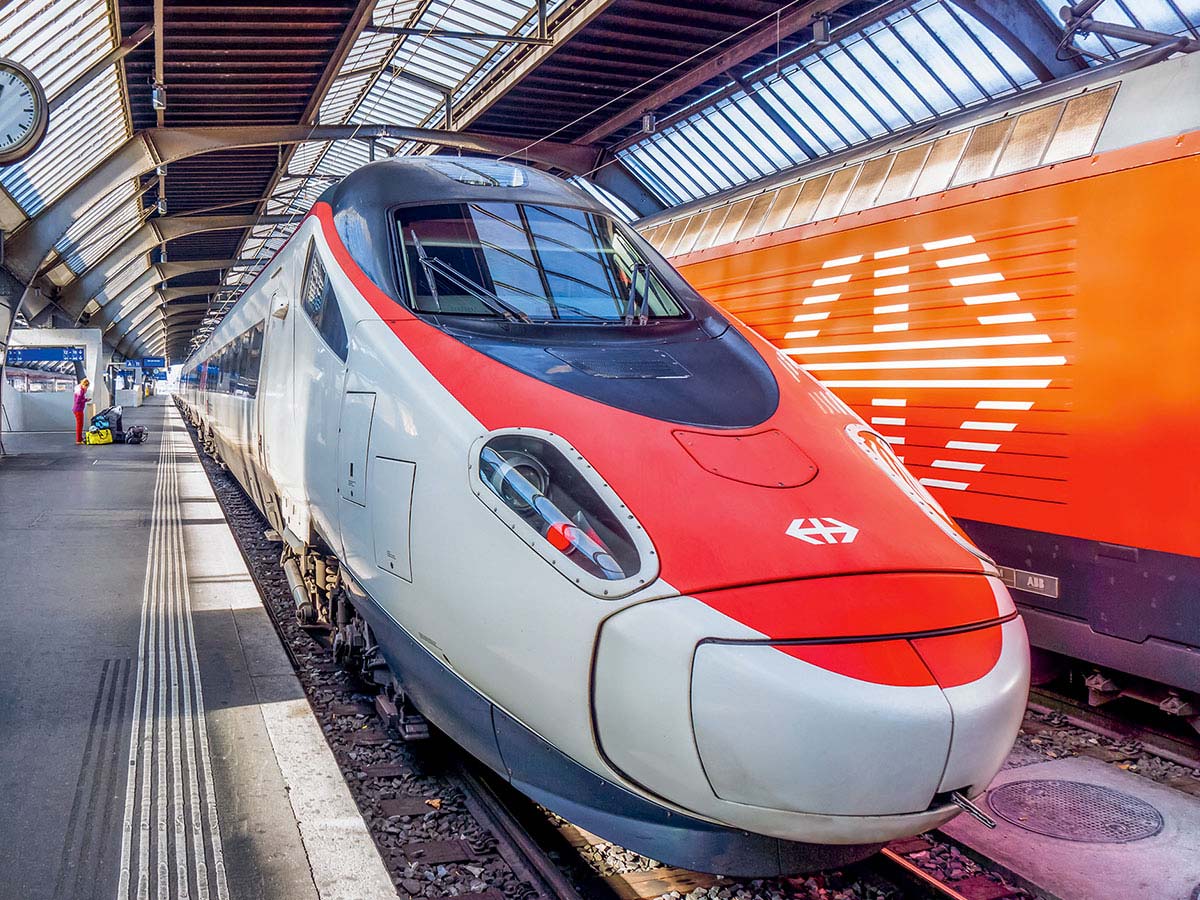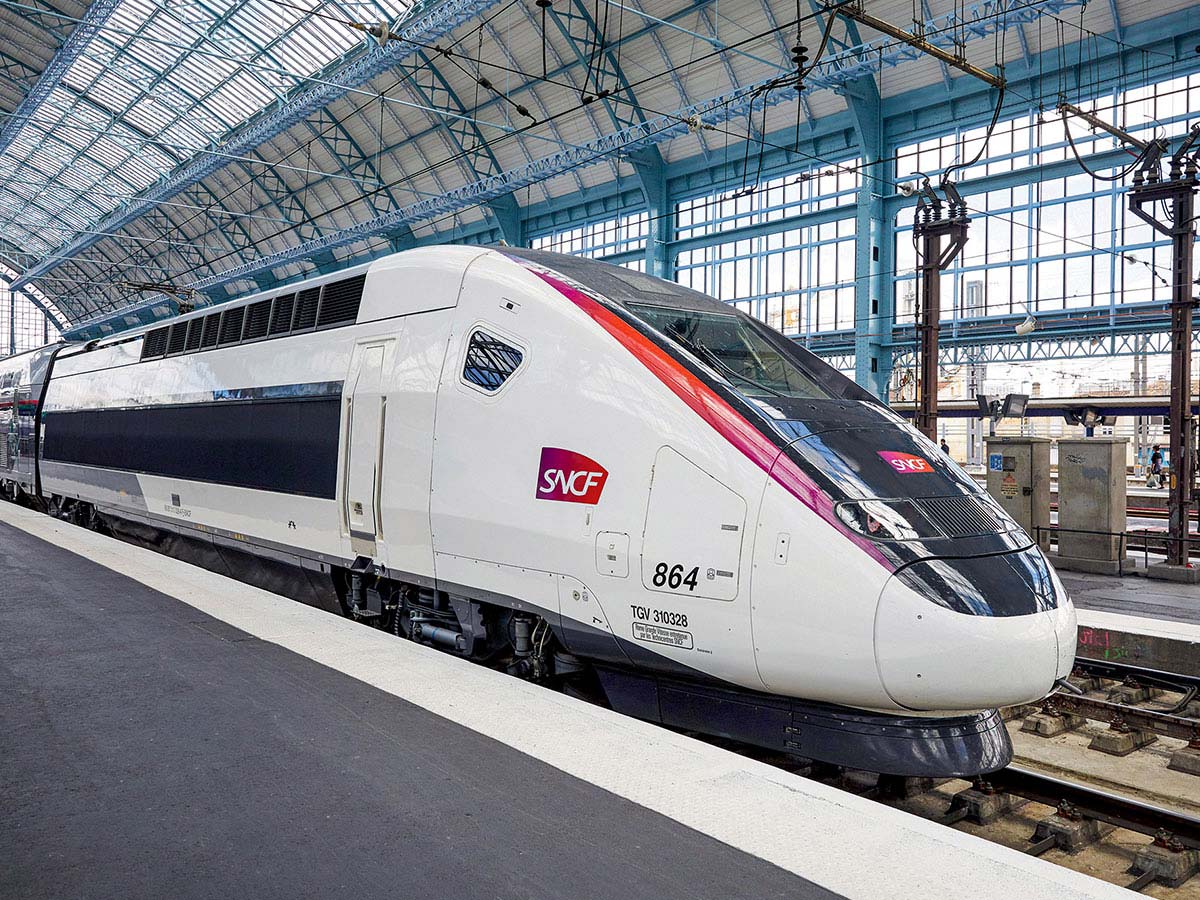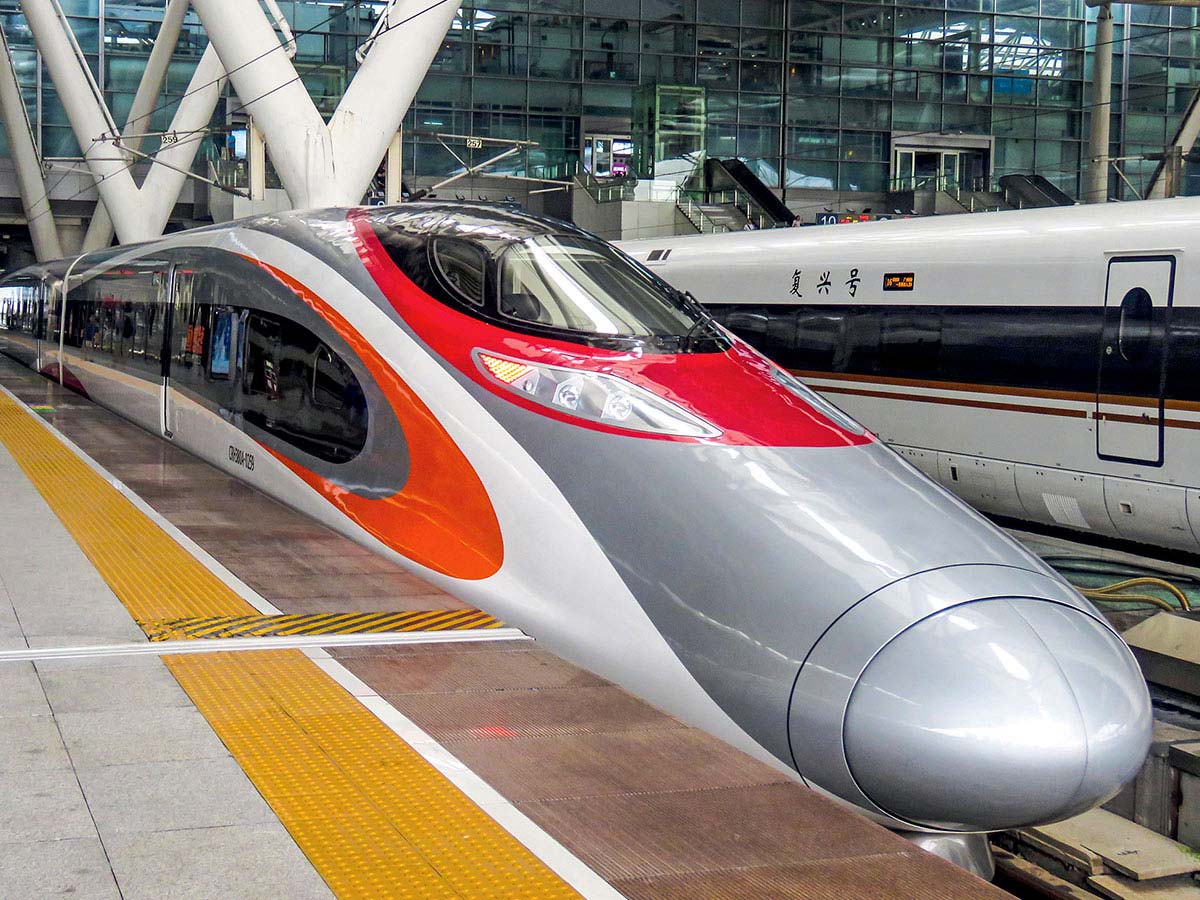ANKARA > ISTANBUL

2014 | Turkey
Journey
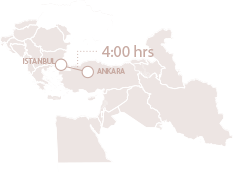
More Info
- Length in km: 376 km (39 tunnels)
- Name of the train: YHT
Many civilisations have succeeded each other on Turkish soil, and each has left its mark on the land. From the enchanting Mediterranean coast to the shores of the Black Sea, the landscapes of Turkey are extremely diverse. Istanbul with its countless traces of a glorious past requires no introduction, nor does the capital city of Ankara, showcase of the country’s economic success. Travelling across their vast territory, the Turkish population once preferred bus or plane travel to rail. Since 2003, this trend has been reversed. With the modernisation of its rail network and the first high-speed link between Ankara and Istanbul, launched in 2014, the train has become a quick and comfortable mode of travel. But Turkey is determined to go even further. The construction of the Marmaray Tunnel under the Bosporus, already in use by the metro system, will soon connect Europe to Asia by high-speed train.
Leaving Ankara
Atatürk’s choice to become the capital city of modern Turkey, Ankara is a city with two faces. Ultramodern Ankara predominates with glass skyscrapers and vast shopping centres, while the discreet city is an ancient one, where beautiful traditional houses around the Byzantine citadel have been well-preserved. The impressive esplanade of the mausoleum erected in honour of Atatürk offers a panoramic view of Ankara. The capital is the gravitational centre of Turkey, and since the 2010s has become the hub of the high-speed rail network. The most imposing rail station of the country is Ankara YHT Gar, inaugurated in 2016 in the government district. Dramatically illuminated at night, this massive “ocean liner” in glass, steel curves and reinforced concrete welcomes high-speed trains on six separate tracks.
The Ankara station is at the centre of a vast high-speed network in full expansion, stretching toward the east, west, and south. Arrivals and departures run smoothly under the vast atrium of the station, and only ticket-holding passengers may access the platform. They may also enjoy the commercial centre lined with boutiques, restaurants and cafés, as well as a cinema, a mosque and a penthouse hotel. The station is also home to meeting rooms and offices. In the shadow of this monumental edifice lies the historic and well-conserved station of Ankara Station. Constructed in 1937 in Art Deco style, this station receives both suburban trains and those arriving from Izmir and Istanbul. Within its walls are four separate museums that evoke the history of the Republic and the Turkish railway. Here visitors discover the rail wagon in which Atatürk, founder of modern Turkey, travelled around the country during the 1930s.
The new golden age of the railway
The first Turkish railway lines were built in 1856 during the Ottoman Empire, with the support of Great Britain, France, and Germany. Under the auspices of Atatürk, the rail network underwent decisive development, followed by a sharp downturn in the 1960s. It wasn’t until 2003 that rail transport became once more a national priority. At that time, the Turkish government allocated a significant budget toward the modernisation of existing infrastructures and launched the high-speed plan. In 2009, the first high-speed line was inaugurated between Ankara and Eskişehir, cutting in half the travel time between these cities. Five years later, in 2014, the line from Eskişehir to the eastern Istanbul suburb of Pendik opened the high-speed connection between the country’s two major cities. In early 2019, the final stretch of the Pendik-Haydarpaşa line, delayed for a time due to archaeological findings, will finally reach the Bosporus, corresponding with the completion of the Marmaray Tunnel under the Bosporus. Designed to definitively link the Asian and European shores of Istanbul, the tunnel boasts two rail tracks that extend to three surface tracks at each end. Currently in use by the metro system, this tunnel is an extraordinary technical accomplishment, and in the near future will allow high-speed trains from eastern Turkey to continue on toward Europe.
Ankara-Istanbul, the journey
After leaving Ankara station, the train runs through city blocks and townhouses interspersed with unkempt woodlands. The city gives way first to cultivated farmland, then to landscapes typical of the Anatolian landscape: arid steppes, bare and pointed hills, rocky cliffs looming above the horizon. A stopover at Polatli is an opportunity to visit Gordion, the ancient capital of Phrygia, the realm of the legendary King Gordias and his son Midas in 8000 BC. Visitors can enter the massive burial mound that is said to have held the tomb of King Midas. On the outskirts of cities passed, rows of poplars dissimulate farms and the occasional slender outline of a minaret. Eskişehir’s name translates literally as “old city”, and is the most interesting stop between Ankara and Istanbul.
This pleasant and lively university town is built around the Porsuk River, where gondolas glide under charming ornamental bridges. Rising above the city is the well-maintained old quarter of magnificent Ottoman homes, cantilevered against the hillside in pastel-coloured hues. The specialities include meerschaum – regional stone – carvings, and a sophisticated cuisine. The surrounding countryside is mountainous, and the line runs through tunnels and steep slopes. Small towns appear, nestled against the flank of tall hills covered in oaks and shrubs. After Bilecik, the landscape veers from rugged to cheerful, studded with fruit trees, vineyards and various croplands. To the right, a vast body of water; could this be the sea? No, it is in fact Lake Sapanca, the getaway destination of choice for residents of Istanbul. Walking paths, café terraces, and lovely white houses with tiled roofs line the lake’s shore. The train continues on to Izmit, where buildings climb the surrounding hillsides and the spread along the Sea of Marmara, a major waterway for cargo vessels. Small bays, landscaped pathways and sea cliffs alternate with industrial sites. And soon the first neighbourhoods of Istanbul come into view at Gebze and Pendik. This modest station was once the end of the line, before the refurbishment of Haydarpaşa, the splendid station that rises above the banks of the mythical Bosporus.
→ Train crossing Beylikköprü Viaduct to Polatlı, between Ankara and Eskişehir.
The demands of geological factors
The construction of the Ankara-Istanbul line met with many challenges: on the second half, after Bozüyük, the line counts thirty-nine tunnels – the longest of which stretches 3 kilometres – threading through the rugged landscape. Furthermore, as Turkey is subject to seismic activity, landslides and flooding, all precautions were taken to account for these risk factors: tracks are equipped with high-performance preventive technologies such as seismographs that detect advance signs of earthquakes. The threat of landslides requires particular “non-skid” structures and a system of buried cables that, in case of track collapse, can continue to signal. For the safety of all, the Ankara-Istanbul line is surrounded by boundary walls within city limits, and video-surveillance systems are installed at certain points. In Ankara, a maintenance base assumes responsibility for infrastructure and rolling stock upkeep. The base can accommodate up to twelve trains at a time.
Marmaray, two minutes to change continents
Two continents connected by tunnel. Abdülhamid II, the last sultan of the Ottoman Empire, dreamed of crossing the Bosporus by an undersea tunnel. In 1902, he commissioned a study for the project but went no further, due to the lack of sufficiently efficient technologies. In 1985, the proposal was taken up again, and validated by the government in the early 2000s. Inaugurated in 2013, the Marmaray Tunnel has become the backbone of the Istanbul transportation system. Every two minutes at rush hour, a metro train takes passengers from one side of the Bosporus to the other. Construction of this immense underwater tube, spanning 13 kilometres – 1.4 kilometres at a depth of 60 m – is a feat of technical skill. Works were undertaken a mere 20 kilometres from the Anatolian Fault, known for its seismic sensitivity, and stabilisation of the sandy bottom of the Bosporus proved difficult. The tunnel is home to three underground stations: Üsküdar, Sirkeci, and Yenikapi. Construction was delayed by the unearthing of major archaeological remains, and what discoveries they were! The traces of a 4th century Byzantine port, the hulls of ships dating back to the 5th to the 13th centuries, a 12th century church, a prehistoric village and its Neolithic necropolis, and countless objects of historical significance. This stunning patrimonial collection will be put on display at the Yenikapi Museum. The continuation of the Marmaray project is also the future highspeed train liaison, covering 77 kilometres via tunnel between Gebze – east of Istanbul – and Halkali, on the European side. These tracks make up the key components of a new Silk Road between China and Western Europe. And so, in the more or less distant future, Beijing and London will be connected by high-speed rail.
China-Turkey cooperation
A Sino-Turkish consortium regrouped companies in both countries to create the first Turkish high-speed rail line. This experiment has encouraged other Chinese companies to participate in major infrastructure projects in Turkey, such as the construction of new lines connecting the western part of the country to the east and beyond, along the Silk Road, notably toward Kars, Tbilisi, and Baku.
→ Ankara Station platform before departure of a high-speed train bound for Eskişehir.
A high-performance fleet
Two types of high-speed trains (YCF) make use of the Ankara-Istanbul line: the CAF, supplied by Spanish manufacturer Construcciónes y Auxiliar de Ferrocarriles prior to 2010, and the Velaro, provided by German manufacturer Siemens in 2018. In both cases, the engine is replaced by a conductor’s cabin, separated from business class by an opaque window. All of these trains reach the maximum authorised speed of 250 km/hr, and the Velaro is capable of reaching the optimal speed of 350 km/hr. Each train sports its own colour scheme: white with red and blue stripes for the CAF, and turquoise for the Velaro, with its optimised aerodynamics. This last is more recent, and thus its interior design offers greater comfort and care.
The restaurant car is spacious, and the red seat upholstery as well as the wood effect of its décor is warm and welcoming. The entrances to major stations are equipped with security portals for passengers and travellers. Passengers board only upon presentation of verified tickets, which bypasses the need for conductors on board. Attendants - women in blue and white pantsuits with turquoises scarves and men in white shirt and tie – pass through the train to offer snack and drink service. In first class, breakfast, sandwiches, coffee and tea are free of charge, and each passenger has a facing screen for on-board movies.
Two high-speed stakeholders
TCDD (Türkiye Cumhuriyeti Devlet Demiryollari), Turkish State Railways, and YHT (Yüksek Hizli Tren), the high-speed rail transport service, are the two authorised carriers of the CAF and Siemens trains.
→ A Velaro TCDD HT80000, built by Siemens.
Arriving at Istanbul
The common bond between two continents and two seas, meeting point between two cultures, Istanbul has long fascinated populations by its exceptional geographical position. Known as Byzantium to the Greeks, Constantinople to the Romans, or Istanbul under the Ottoman era, every corner of the city offers perceptions of history and great architecture. Some of the most beautiful mosques in the world are here, as well as Byzantine churches and sumptuous palaces. The soul of Istanbul lies in its sloping streets lined with wooden houses and the fevered activity of its colourful market. Magnificently restored, the Haydarpaşa Station is the end of the high-speed line from Ankara, since 2019. Built upon land reclaimed from the strait, the station rises proudly above the Bosporus, surveying the constant ballet of boats and ferries taking travellers from one bank to the other. The station’s Germanic style, Gothic spires and massive pink granite blocks of its façade lend a unique appearance. Inside, the moulded, sculpted and painted ceilings are of the finest workmanship, as are the stained-glass windows.
The high-speed effect
Just ten years ago, 95% of the Turkish population preferred the automobile to other forms of transport. The reorganisation and modernisation of the conventional rail network as well as the advent of high-speed have begun to change travellers’ choices for interurban transportation and attenuate traffic congestion in urban areas. In Istanbul, suburban dwellers accustomed to sitting in traffic for two hours to enter and leave the city can now do so in only ten minutes. Thanks to the Marmaray Tunnel, connections between the two sides have greatly reduced traffic on bridges with the added benefit of lessening the impact of automobile congestion in historic parts of the city.
The high-speed line linking the two principal cities of Turkey constitutes an “economic corridor” that is beneficial to cities along the line. New stations make these considerably more attractive. In Eskişehir for example, the municipality has made investments to improve tourist attractions: museums, archaeological sites, pedestrian streets, river rides, and restaurants… Now easily accessible, the city has become a viable day-trip destination from Istanbul or Ankara.
Future prospects
The Turkish high-speed network is still in its early stages. Rail projects have proliferated over the past fifteen years. With the completion of the high-speed lines which are under construction, the total length will be 4,500 kilometres. By the 100th anniversary of the Republic, in 2023, total length of Turkish high-speed lines will more than double to reach 11,702 kilometres. The Ankara-Sivas line will soon enter service, and travel time for the 405 kilometres between the two cities will be two hours rather than twelve. This line, which traces the Silk Road, follows a major commercial axis to access Asia, eventually connecting Kars to Tbilisi in Georgia and Baku in Azerbaijan. The Ankara-Izmir line (606 kilometres) is also underway, connecting the capital to the country’s third city in three and a half hours. With projects for high-speed lines between Eskişehir and Antalya, Bursa and Bilecik, and Konya and Karaman, the agenda is full!
a selection of HIGH-SPEED LINES by creation date
1964

TOKYO > OSAKA
1992

TURIN > NAPLES
1992

MADRID > SEVILLE
2002

COLOGNE > FRANKFURT
2008

BARCELONA > MADRID
2010

SEOUL > BUSAN
2011

BEIJING > SHANGHAI
2014

ANKARA > ISTANBUL
2014

LANZHOU > URUMQI
2016

SHANGHAI > KUNMING
2016

TOKYO > HAKODATE
2016


ZURICH > MILAN
2018

BEIJING > HONG KONG
2018

TANGIER > CASABLANCA

